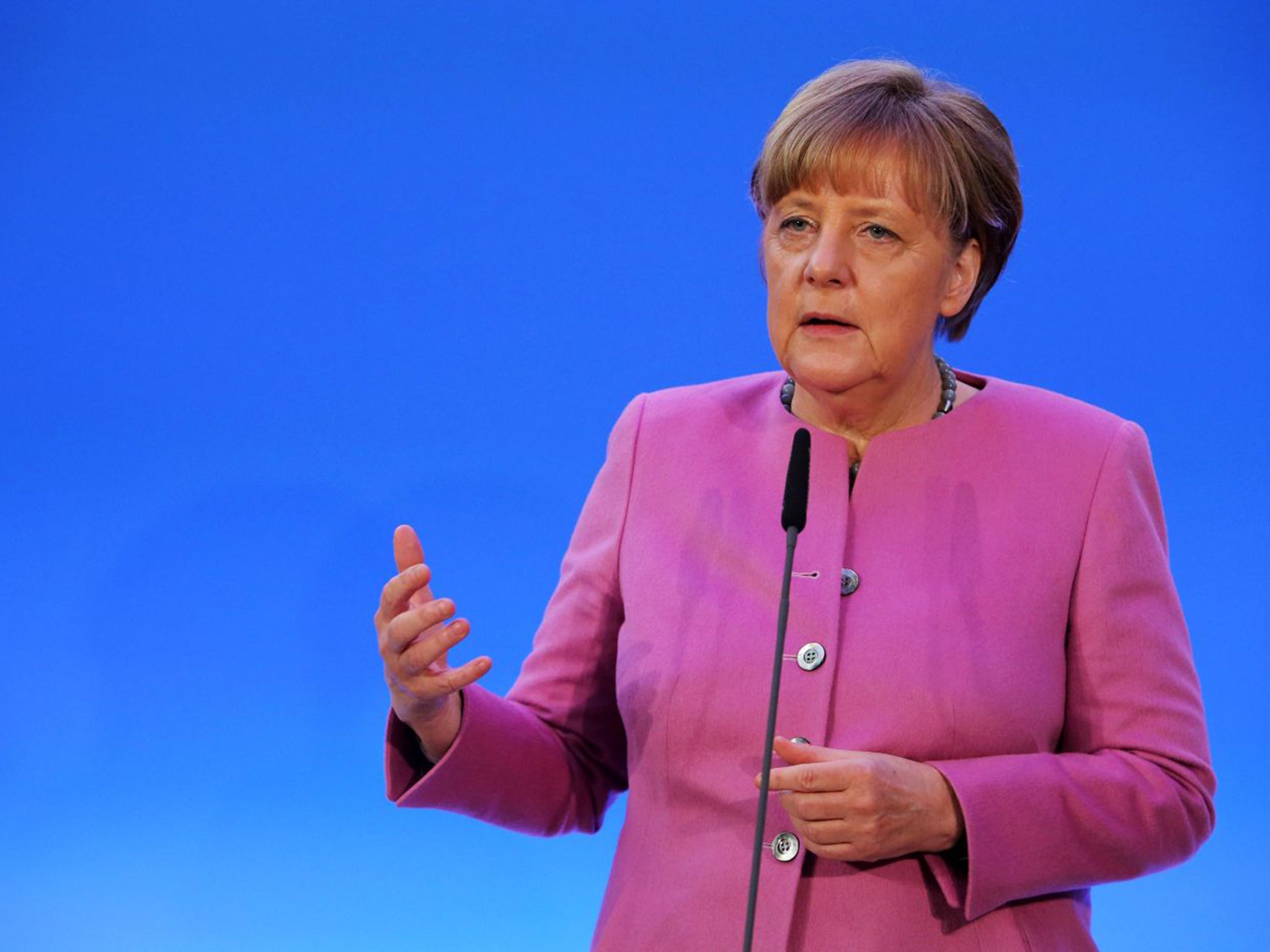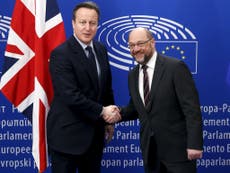Merkel wants a no-fly zone in Syria – but has she thought it through?
Most advocates of this policy avoid going through it in detail

The Geneva peace process is dead in all but name. The “cessation of hostilities” – its puny sequel – has been brushed aside by Russia, Iran and the regime of Bashar al-Assad, ahead of a likely push to crush the rebellion once and for all. The promise of aid to besieged communities cannot mask the very real threat of the civil war entering its most barbaric phase yet: recent Russian air strikes have targeted Aleppo’s hospitals and schools. It is the opinion of Senator John McCain that the Kremlin has started to use refugees as a weapon – targeting infrastructure with the aim of pushing another mass of displaced Syrians towards Europe. He is almost certainly right.
What to do? There are two paths open to the West in attempting to gain some leverage. The first, pursued at one time or another by America, Turkey, Saudi Arabia and the Gulf nations, is to provide more arms to the moderate rebel factions in Aleppo and beyond. Because Jabhat al-Nusra – an offshoot of Al-Qaeda – has often fought alongside the mainstream opposition, this is hard for Western publics to swallow – which is why most of the US work is done clandestinely by the CIA. Even putting aside the likelihood of strengthening Al-Qaeda, there are questions over how much exactly further weaponry could achieve, against the might of the Russian air force and Iranian militias.
On the surface, the second option promises to do more good in exchange for less mess. Angela Merkel is the latest world leader to float the idea of a “no-fly zone”, stretching east from Aleppo to the Turkish border, and providing safe haven for displaced civilians. It was no accident that Merkel mentioned this plan in the context of a discussion on refugees. If they can stay in Syria, they may not come to Germany.
But the Chancellor fell into the same trap that most “no-fly zone” advocates do – which is, broadly, not giving it enough thought. Eight of the 10 presidential candidates support a no-fly zone: one, at most, shows any sign of understanding what it would entail. The Republicans chuck the words out because they want to seem tough. Hillary Clinton, who makes the best case, nevertheless first suggested that the zone would run in co-ordination with Russia – a bizarre call, given that Russia has thus far been mowing down the same people it would protect. (Clinton’s mistake was, unfortunately, repeated by Merkel.)
A no-fly zone is not impossible, but it requires a willingness to shoulder large costs and larger risks. Even if Turkey and Saudi Arabia can be convinced to provide the ground troops necessary to protect its borders, US planes would need to be on standby 24/7 to block off any Russian incursions. The most obvious fear is that a dogfight leads to a broader conflagration, and – as Kremlin spokespeople keenly point out – the start of World War Three. Clinton rather skirted the question of what she would do in the event of a Russian plane entering the zone (the first two times, you would warn them, she told NBC, but couldn’t quite bring herself to voice out-loud the presumed punishment on a third run).
Then there is the problem of what to do about rebel fighters. A no-fly zone is only likely to gain UN approval if it is explicitly and solely for civilians. That would mean trying to turn bedraggled rebel fighters – many of whom the US supports – away. The potential for conflict here spikes. If the groups were however to be allowed in to rest and restock, America would in effect be sponsoring a rebel state. The former chairman of the Joint Chiefs of Staff, Martin Dempsey, claimed a fully US-led zone would require 70,000 soldiers and cost up to $1bn a month.
The West must indeed “do something”. Canadian academic Michael Ignatieff rightly summarised Aleppo as “the new Sarajevo, the new Srebrenica”. But world leaders and potential world leaders who claim they are fully prepared to establish a no-fly zone should consider a third option. That is, to take all the political and financial will that it would require and apply it to providing safe havens for Syrians outside of the country. Take that $1bn or $500m a month and, instead of spending it on a hugely risky military endeavour, use it to set up zones in Turkey, Lebanon and Jordan in which Syrians cannot only live – but work. This plan belongs to world-renowned development economist Paul Collier: as of today, none of the four million or so refugees in the countries neighbouring Syria are allowed to take jobs. To convince Jordan and co to let them set up businesses of their own, and export goods to Europe, would cost serious money – as would pump-priming the markets. But the result would be places where Syrians can live, learn and work in peace – until such time as they can move back.
Everyone likes to talk tough. Much of the US public backs aggressive military action. In Syria, a more aggressive policy is called for. But that aggression should be diverted to humanitarian ends, which means either taking in vastly more innocent civilians – something Europe and the US are apparently not prepared to – or paying for and overseeing the establishment of economically liberal safe havens in the Middle East.



Join our commenting forum
Join thought-provoking conversations, follow other Independent readers and see their replies